As most facility managers recognize, maintenance is an essential element of the operating continuity that underpins successful production management. Yet, we are always amazed to learn how often this function is not as proactively managed as it should be. Even in cases where the firm has deployed an EAM (enterprise asset management) or CMMS (computerized maintenance management system) solution, we often discover it has not been deployed and configured effectively. In other cases, there is a disconnect between management’s goals and the maintenance staff’s execution.
Fortunately, these problems are not as difficult to resolve as one might expect. As with all efforts designed to drive excellence, once the first steps are taken to implement best practices maintenance management with a full-featured CMMS such as Azzier, plant workers and their managers start to see the light at the end of the tunnel. They become intrigued by (and often truly excited about) the potential the maintenance solution holds.
The Role of Maintenance Management in Plant Operations
Before we proceed with our discussion, let’s quickly recap the value of maintenance management. Although these objectives are well known, once systems break down and maintenance isn’t being properly managed, outcomes diminish. This leaves workers and managers questioning whether the promised value is still achievable. Status quo rules the day.
Plant maintenance, i.e. the set of activities necessary to keep machinery, parts and varied equipment in good operating conditions to avoid production stoppage and loss, cannot do its job if not properly managed. The objectives of maintenance management, which produce the value inherent in proper execution, should always include:
- Minimizing lost production time due to equipment failure. We consider this the “no-brainer” benefit, but our technical experts are often surprised at how inadequately even this objective is being managed.
- Keeping all productive assets in good working condition. This benefit can be one of the most elusive of all. If assets are not in good working condition, they breakdown more frequently. That leads to downtime, which can encourage workers to “make do for the time being.” That in turn makes more outages likely. This behavior has no place in a well-run facility!
- Reducing loss due to the production outages. Whether isolated to a line or plantwide, outages, e.g. downtime, cost money. A 2016 report by research firm Aberdeen benchmarked the cost at $260,000 per hour. This figure is nearly $100,000 higher than average downtime costs in 2014 ($164,000 per hour), so it is indisputably even greater now.
- Improving the quality of the finished product. Although quality is crucial to the success of any product-oriented company, we are often surprised that this factor doesn’t make the list of mission-critical objectives.
- Reducing the total price tag for repairs, preventive maintenance and spare parts inventory carrying costs. Although maintenance management isn’t a direct profit center, every dollar lost due to poor maintenance management or its negative impacts delivers a blow to the bottom line. Note: we have written about all these issues in other blogs. We invite you to to review our archive here.
Four Core Maintenance Activities and How to Best Achievement with Them
Now that we have covered the objectives plant management should be achieving, let’s illustrate how a CMMS improves the four core maintenance activities and how a CMMS makes them better. (Note that we’re not referring to the four approaches to maintenance management (corrective, preventive, risk-based and correction-based) or their relative merits. A properly implemented and configured CMMS will streamline and boost efficiency with all four approaches.)
Rather, we’re considering four elemental functions that support all of them: spare parts organization and retrieval, work order review and management, work order scheduling, and equipment maintenance. Following are examples of how productivity is impacted by various maintenance management strategies, including use of a top-rated CMMS like Azzier. These percentages are not conjectural. They are the result of real-world calculations by Tero experts based upon our experience with actual projects.
| Level of Technology Sophistication | Time wasted looking for spare equipment parts (averages) | Time wasted looking for information about a work order | Time wasted with wrong priority work order | Time wasted if equipment unavailable for maintenance |
|---|---|---|---|---|
| Work Order Management | ||||
| Manual Work Order | 5-15% | 0-5% | 0-5% | |
| No Work Order System | 10-20% | 5-10% | 10-15% | |
| Maximum automation with computerized inventory and work order system | 0-5% | 0 | 0 | 0 |
| Inventory Management | ||||
| No Inventory System | 15-25% | |||
| Manual inventory system | 10-20% | N/A | N/A | N/A |
| Computerized inventory and manual work order system | 0-5% | 0 | 0 |
In addition to these “expense creep” issues, we can add one more. The cost of asset ignorance without a CMMS can be incalculable. For drill downs on the many benefits of a comprehensive maintenance program, paired with evidence of what a centralized CMMS package can do for your firm, please visit Fast ROI and Hard Savings – Web Work Azzier.





















































